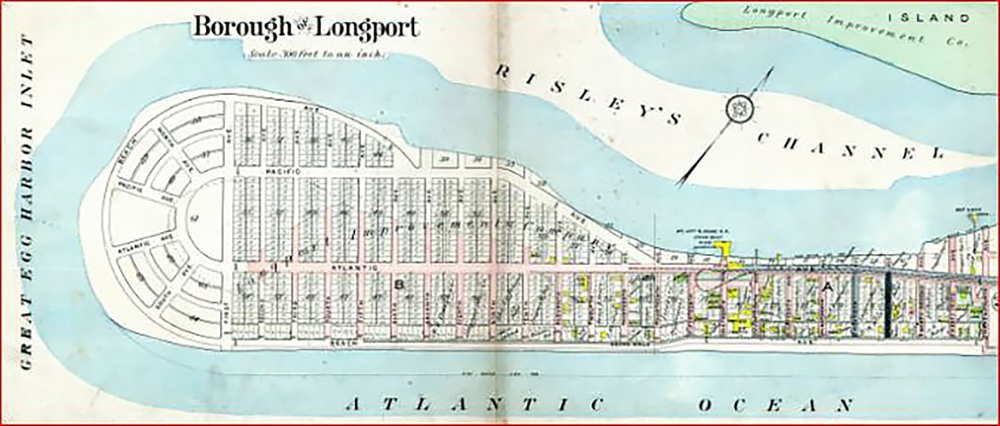An Early History
According to local historian and former Mayor Michael Cohen, in his book “Longport- The Way We Were,” the first recorded private landowner was Thomas Budd, who settled a claim against the Lord Proprietors of New Jersey in 1695. In the claim, he was awarded 1,500 acres of land, of which a large portion was located on Absecon Island. He later sold most of the property at cost of four cents an acre.
Years later, in 1854, Samuel Overshine purchased a parcel of land containing dunes that built-up at the southwestern end of the island for $130. That same year he sold a parcel of that land for $10 to Isaac Barton. Three years later, Barton traded what was known as Lot 32 for a total of $2,000 plus land in Arkansas to James Long.
Long kept the property for 25 years and over the years, his property value increased in both value and size. His property increased by a little more than a mile in length after accumulating sand from an erosion updrift from Atlantic City between 1870 and 1880. He never came to see the land he purchased, nor did he decide to develop it. Although, he came back to Longport several years later and purchased an entire block of land, between 12th and 13th avenues, where he built a home on the beach. Long named it the “Bide-A-Wee.” By the turn of the century, the home was sold and became a sanatorium. The building was destroyed by a storm in 1914.

1908 map shows a longer Longport
Long decided to sell Lot 32 to his friend M. Simpson McCullough in 1882. McCullough, a renowned Philadelphia lawyer, businessman, developer and builder, thought of developing the area into a “seashore resort.”
McCullough purchased the area, which had increased to a size of 250 acres for a total of $150,000. He then decided to name the area “Longport” in honor of the previous parcel owner and his friend. The naturally long port on the bay side also contributed to McCullough’s decision in names.
Longport became a good deal shorter between the years of 1900 and 1916, when approximately 180 acres of the 250 that McCullough purchased, moved across the inlet and became what is known as the Ocean City Gardens. This explains why the first avenue of the borough starts at 11th, instead of first, as avenues one through 10 were lost during those years.








